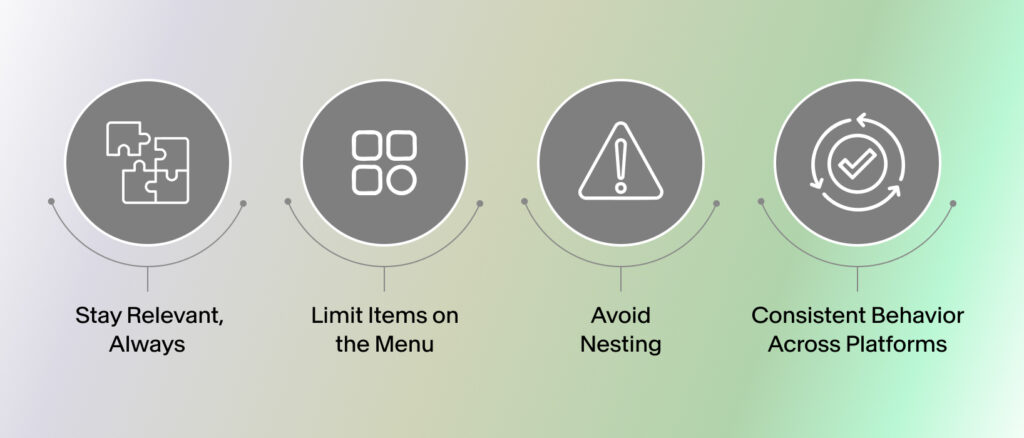In the evolving landscape of UI/UX design, contextual menus have emerged as a pivotal tool to streamline user interaction on any experience designed for global audiences. These menus are often triggered by simple, universal actions like right-clicking or pressing and holding an element to activate it, providing users with relevant options based on their current context, thereby enhancing usability and personalization without overwhelming the interface with clutter.
Stuti Mazumdar - June 2025

Understanding Contextual Menus
A contextual menu, also known as a context menu or shortcut menu, is a pop-up menu that contains a specific set of actions that are relevant to the user’s current activity or selection. Unlike traditional menus, which often appear at the top of an experience or tucked away in a hamburger menu, and are always visible, contextual menus appear upon specific user interactions. This makes them extremely intentional actions by the user, allowing designers to encapsulate these actions under a “hidden” menu.
The Role of Contextual Menus in Modern UI/UX Design
Now that we’ve understood what contextual menus are and where they appear, let’s view some use cases in the world of modern product design.
1. Amplifying User Engagement
A context menu provides quick access to functions that are relevant to the user’s current user journey or end goal. For instance, right-clicking on a text document might offer related options like ‘Cut’, ‘Copy’, ‘Save’, or ‘Paste’. Had this menu not popped up, a user would need to work through multiple nested menus to find the option they need. This immediacy reduces the need for users to navigate through those multiple menus, thereby streamlining the workflow.
2. Reducing Clutter Across the UI
By housing less frequently used options within a context menu, designers can create a simple, clean, and minimalistic interface, urging users to interact with the experience freely. This approach also ensures that primary functions remain prominent, while secondary options are accessible when needed.
3. Enhancing Accessibility
For differently-abled users, a context menu can enhance productivity by minimizing the steps required to achieve their goals. Moreover, by displaying keyboard shortcuts alongside menu items, users can learn and adopt these shortcuts over time, further improving the ease with which they traverse across the experience.
How to Implement Context Menus Seamlessly?

1. Stay Relevant, Always
2. Limit Items on the Menu
A context menu appears over an element of the UI as a pop-up menu. Overloading it with too many options can be overwhelming. We highly recommend keeping the number of items within a manageable range, typically between 5 -10 line items, to ensure all options are visible without scrolling and avoid decision fatigue in users.
3. Avoid Nesting
While submenus can help organize related actions better, excessive nesting can complicate navigation. The goal of a context menu is to provide users with relevant interactions easily. Hence, aim to keep the menu structure shallow to facilitate quick access to functions.
4. Consistent Behavior Across Platforms
The method of summoning context menus should be consistent across different devices when interacting with the same experience. Ensuring consistency in behavior enhances user familiarity and ease of use.
Common Pitfalls and Challenges When Designing Context Menus
1. Solving Discoverability
One of the primary challenges with context menus is that they are not always discoverable, especially for users interacting with an experience for the first time. Unlike visible buttons or menus that are a part of the visible UI, context menus require users to know the specific interaction to access them. For instance, right clicking, pressing and holding, etc..
2. Device Compatibility
While discussing consistent behavior across platforms, we mentioned that maintaining the same interaction devices is necessary. However, accounting for the varying methods of summoning a context menu on devices across the globe with consistent OS and UI updates can be challenging. Managing consistency requires designers to identify evergreen user engagement models and technical constraints to ensure they don’t design an inconsistent experience.
3. Accessibility Concerns
Ensuring that context menus are accessible to all users, including those relying on keyboard navigation or assistive technologies like speech-to-text, is crucial. Providing alternatives is, hence, paramount.



